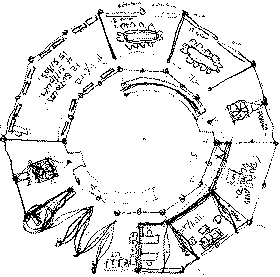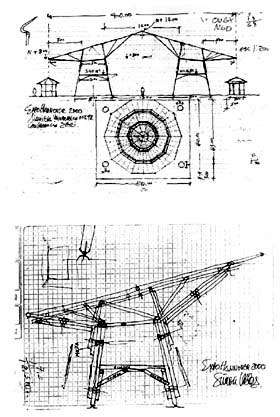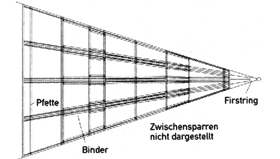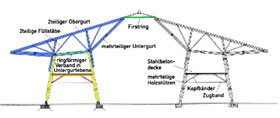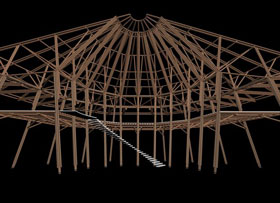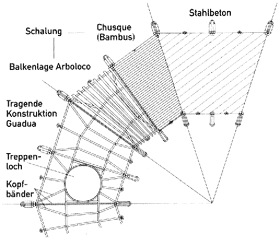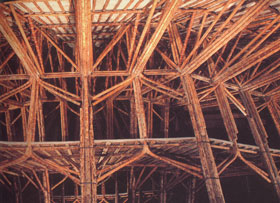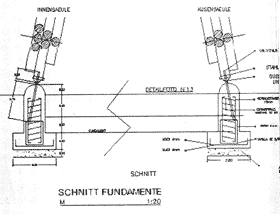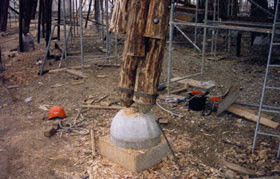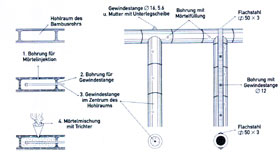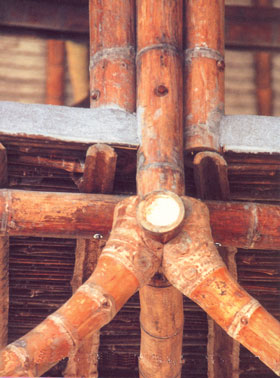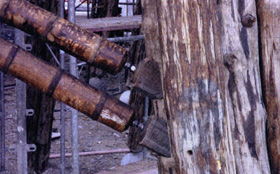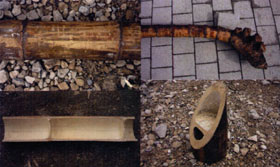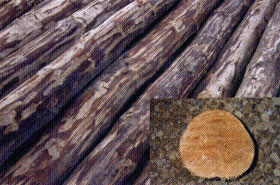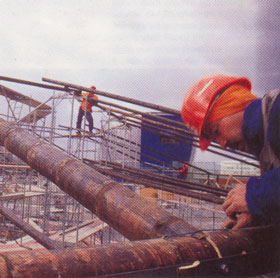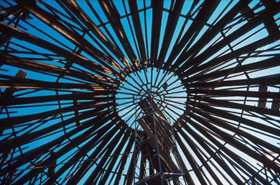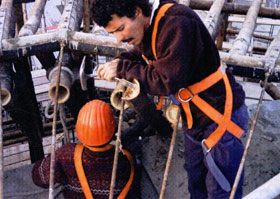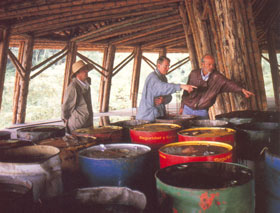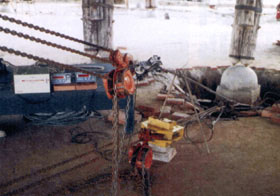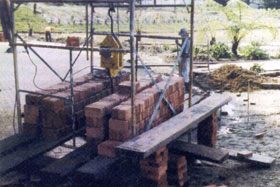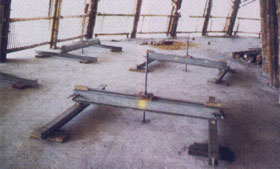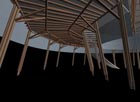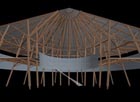Introduction
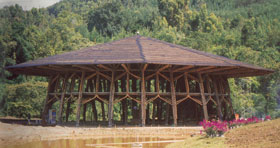
The ZERI organisation (Zero Emission Research Initiative) develops strategies for a lasting way how to deal with the natural resources of our planet in order to satisfy basic needs of all people.
The pavilion, which was build by I for the EXPO 2000 in Hannover, represents the principles of ZERI´s work. "The ZERI Pavilion is a circular construction, thus one without a beginning, without an end, open in design as to invite everyone to participate without obstacles. It is open and unobstructed. It symbolises a universally accessible organisation which embodies concepts and technologies which are applicable anywhere and accessible to everyone."( Marshall McLuhan)
As it is one of ZERI´s purposes to establish bamboo as a construction material in South America, the organisation decided in 1997 to build the pavilion as a framework construction made of bamboo.
Simon Veléz , a Columbian architect from Bogota, has been working with bamboo for a longer while. He developed a new technology to connect the bamboo canes using thread rods and concrete/mortar injections. This new technology allows to realize impressive constructions and great spans.
